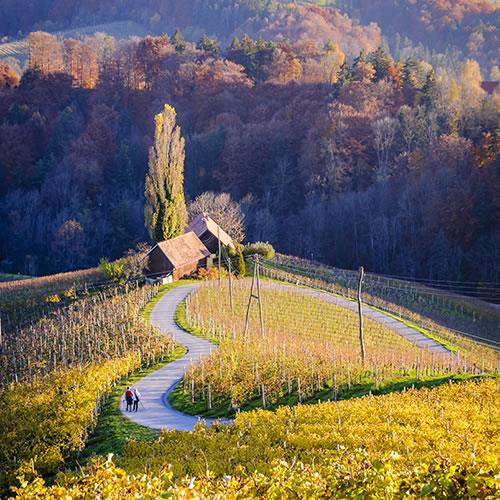


Slovenian Styria (called Štajerska in Slovene) is the southern third of the historic region of Styria. The landscape is a mix of pastoral scenes and industrialized towns and cities. The largest city in the region, Maribor, is one of the former Yugoslavia's most industrialized cities and was integral to its economy. Today, Maribor and other similarly industrialized towns like Celje and Velenje are crucial to the success of the modern Slovenian economy. Beer and wine connoisseurs will recognize Styria for their aromatic hops, and its Ljutomer Riesling, a delightful palate-cleansing white wine. Rivers that flow in Slovenian Styria include the Drava; the Savinja; and in southern Styria, the country's longest river, the Sava.
Ljubljana, Slovenia`s capital, is one of Europe`s best-kept secrets. Visitors only need a few moments to walk the pedestrian-only streets in the city center to feel its hospitable and historic charm. Ljubljana is Slovene for `beloved`; once you experience the city`s splendor, you will indeed fall in love.
Lake Bled, one of the most picturesque vacation destinations in Slovenia`s Julian Alps, has so much to offer travelers, ranging from world-class skiing to hiking, fishing, shopping and horseback riding. In the center of the lake is Bled Island, with the beautiful Assumption of Mary Church in the middle.
The Slovenian Riviera is a popular seaside tourist destination, and has been open to tourists since the time of the Austro-Hungarian Empire. The Riviera consists of 29 miles of some of the best beaches, yachting, and water sporting opportunities on the Adriatic. Portorož Beach, the most popular beach in Slovenia, is the jewel in the Riviera`s `crown`.